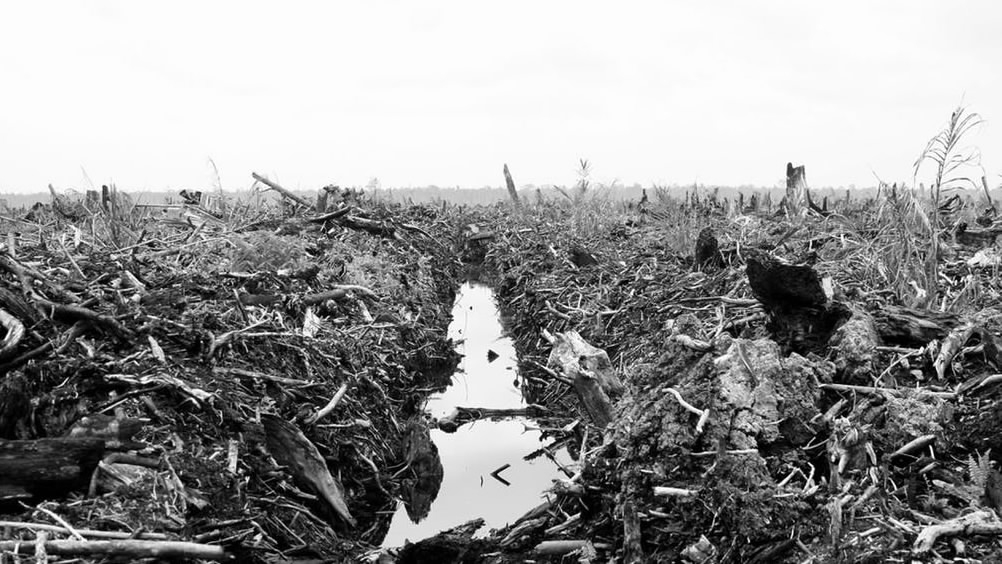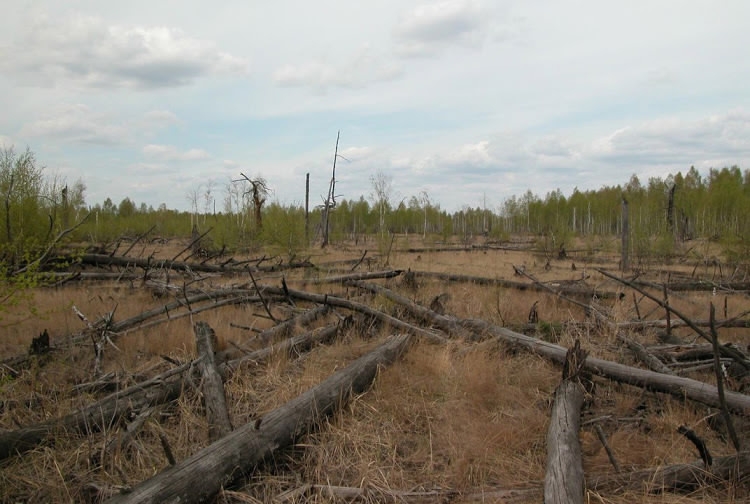
Envrio
18:10, 08-Nov-2017
Congo peatlands a ‘carbon bomb’, warn scientists
CGTN

Scientists and green campaigners say central Africa's peatlands hold gigatonnes of carbon, a stockpile that poses a grave threat to hopes of limiting global warming to two degrees Celsius.
The product of vegetation decay that occurred eons ago, the carbon has been safely locked in the soil for thousands of years, but risks being unstoppered by farming.
Released into the air, the gas could add dramatically to greenhouse gas emissions caused by fossil fuels.
"We have a map of the central Congo peatland we published for the first time this year, which shows that they cover around 145,000 square kilometers, an area a bit bigger than the size of England," said Simon Lewis, a scientist from the University of Leeds on a soil-sampling mission to remote northwest DR Congo.
"We think it stores about 30 billion tonnes of carbon. That's as much carbon as the emissions from fossil fuels, all the emissions from humanity globally for three years."

Tropical peatlands are at threat from land clearance, draining and forest burning, which release heat-trapping carbon gas locked in the soil. /AFP Photo
Tropical peatlands are at threat from land clearance, draining and forest burning, which release heat-trapping carbon gas locked in the soil. /AFP Photo
Vicious circle
For nearly two decades, climate scientists have warned of the threat of so-called positive feedbacks, a vicious circle of global warming.
Fears have focused primarily on the potent greenhouse gas methane seeping from thawing Arctic permafrost.
These emissions would add significantly to warming, which would thaw more permafrost and which in turn would release more greenhouse gas to stoke global temperatures.
But the dark, swampy peatlands of the tropics are now also a major area of concern.
This has made draining the soil for farming and slash-and-burn agriculture big climate threats.
In 2015, the World Resources Institute (WRI) calculated that fires in Southeast Asia, where much land has been converted for the production of palm oil and others, sent more greenhouse gases into the air than all US economic activity in 26 out of 44 monitored days.

Fires by farmers on tropical peatland in Southeast Asia have caused widespread environmental damage and also pose a serious health hazard. /AFP Photo
Fires by farmers on tropical peatland in Southeast Asia have caused widespread environmental damage and also pose a serious health hazard. /AFP Photo
The fires are also to blame for choking smoke, shrouding parts of Malaysia, Singapore and Indonesia.
The Congo basin is exceptionally rich in peat, about two meters thick according to a study published in the science journal Nature in January by Lewis and colleagues.
So far, the peat remains largely undisturbed. Campaign groups are desperate for it to remain so and for the forests which suck carbon dioxide from the air to be preserved.
"The Congo basin rainforest is the second largest in the world," said Matt Daggett, Greenpeace's global campaign leader.
"We have known for many years that it is critical for the biodiversity of animals and plants. With this discovery, we have also found that it is critical for the climate."
The people question
But then the question arises: what should be done for people who live there?
Campaign groups say there is absolutely no question of expelling forest people. In fact, people who live in the forest and depend on it are likely to be keener to conserve it, they argue.

Environmental decay. /Stock Photo
Environmental decay. /Stock Photo
That thinking makes sense to villagers in remote Lokolama, who live from hunting, fishing and subsistence farming.
But, says Valentin Ingubo, a man in his fifties who represents the native peoples of Lokolama, they are also trapped in extreme poverty, and this "puts pressure on the forest".
"Instead of creating activities which generate income and give the forest a bit of a rest, we destroy the forest to get the things we need to survive," he said.
Last month, researchers reporting in the peer-reviewed US journal Proceedings of the National Academy of Sciences said smarter land use could help to meet the target of two degrees Celsius.
Planting more trees, more sustainable farming and conserving wetlands and peatlands could slash carbon dioxide emissions by more than 37 percent, the researchers estimated.
Source(s): AFP

SITEMAP
Copyright © 2018 CGTN. Beijing ICP prepared NO.16065310-3
Copyright © 2018 CGTN. Beijing ICP prepared NO.16065310-3